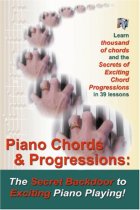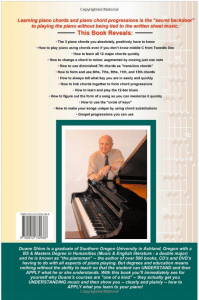Appoggiaturas – What In The World Are They?
So What Are Appoggiaturas?
| Good morning, this is Duane, and this is more good stuff you really ought to know. There’s so many things in music that you really need to know because it will add to the enjoyment and the excitement of playing, and appoggiaturas are one of those thousands, there’s thousands of things we need to know, and appoggiaturas is just one of many. Appoggiatura, by the way, is one of the non-harmonic tones, so may be ought to start by defining what a harmonic tone is.
|
|
| A harmonic tone is a member of a chord. Whatever chord’s in force at a given moment in the song, that’s the harmony, isn’t it? In other words, let’s say that the chord you’re playing in the song is F minor 7th. Well, if somebody sings this, or that, they’re out of tune, aren’t we? We say, “Man, he’s off. He’s flat. He’s sharp. She’s out of tune. She’s not with the harmony. She’s non-harmonic.” Any note that’s not in that chord is a non-harmonic tone.
|
|
| There’s several kinds of non-harmonic tones as you know. There’s passing tones, which are the most frequent, I think. There’s neighboring tones, where you go next door to a neighbor and come back, and there’s suspensions where the 4th takes the place of the 3rd. There’s anticipations, and then there’s appoggiaturas. An appoggiatura is a non-harmonic tone which happens on a strong beat of a measure. The classic appoggiatura is Leonard Bernstein’s “West Side Story,” “Maria.” That’s a strong beat, isn’t it? You know what melody note that is? That’s F sharp. You know what chord it is? C. Does F sharp go in the C chord? Hardly. It’s about the worst note to go in the C chord, but of course Leonard Bernstein wove it in very skillfully.
|
|
| Why would he do that? Why would he play a non-harmonic tone like that and then resolve it? Because it builds up tension. You see, a non-harmonic tone like an appoggiatura builds up tension and then that tension is relaxed. If you think about it, all of music is a battle between tension and relaxation. Have you ever thought of it that way? Next time you listen to a piece of music, think about that. The music may start calm and then it builds up to a climax and then it relaxes, or phrases do that. You get the idea, right?
|
|
| All of music in terms of dynamics, in terms of tempo, whatever, is a battle between tension and relaxation. If we have all relaxation, if it’s all super relaxed, what do we have? Boredom. I mean it’s good music to sleep by but it’s boring. If we have all tension, what do we have? Craziness. It’s like overthrowing society, I mean, it’s too much. We need a balance of tension and relaxation, and appoggiatura’s a good way to do it.
|
|
| There’s two reasons you should know that. One, when you see written music, you should know what that’s doing there and why it might be there, but secondly, in your own creations, your arranging, your improvisation, you can use appoggiaturas on purpose. You can go to a non-harmonic tone and then resolve it. Let me give you an example. You heard a lot of appoggiaturas there, when I went like this. That’s an appoggiatura because it relaxes into a harmonic tone. It resolves into a harmonic tones. I don’t think those are very good examples but you can hear non-harmonic tones and then they dissolve into harmonic tones.
|
|
| Okay, well that’s just one of thousands of good stuff you really ought to know, so file it away. You might be able to use it sometime, so we’ll see you next month. Bye-bye for now. | |
| Hi, this is Duane again, and I’d like to tell you about a little book that I wrote a few years back. It’s called “Piano Chords and Chord Progressions: The Secret Back Door to Exciting Piano Playing.” It’s a terrific resource about chords. If you want to know more about chords, you ought to latch onto this book. It’s just barely over 10 bucks, 11 bucks I think it is, and it covers all the chords and chord progressions that I talk about in my videos. It’s just a great, it’s not a substitute for videos, of course, or DVDs, but it’s a great summary, and it’s so inexpensive that it’s well worth your while to get. | |
| Here’s the Table of Contents. Just look down here and see all the things it covers. It starts out with major, minor, diminished, augmented, 6th, 7th, and on to 13th chords, and suspensions and alterations, and then gets on to chord progressions, and so on. It’s a very, very thorough book and it’s got a lot of illustrations. I’ll just toggle through a little bit, and there’s the back cover. It’s worth your while to get. I hope you take advantage of that. Thank you. Bye-bye for now.
————————————————————————————————————————————————————————————————–
|





